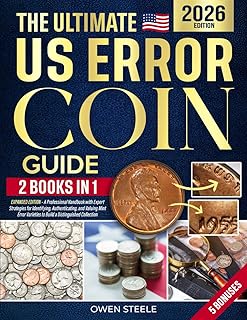Welcome to my coin collecting and coin valuation blog, where I share insights and trends in the fascinating world of numismatics. In today's article, we will be discussing an essential aspect of coin handling: choosing the best gloves. Whether you are a seasoned collector or just starting your coin journey, finding the right gloves can significantly protect your coins from dirt, oil, and fingerprints. With numerous options available, such as lint-free cotton gloves and powder-free latex gloves, determining the best fit for you can be challenging. Join me as we explore the different types of gloves' pros and cons and discover tips for handling your coins with care, ensuring their preservation and value for years to come.
Welcome to my coin collecting and coin valuation blog, where I share insights and trends in the fascinating world of numismatics. In today's article, we will be discussing an essential aspect of coin handling: choosing the best gloves. Whether you are a seasoned collector or just starting your coin journey, finding the right gloves can significantly protect your coins from dirt, oil, and fingerprints. With numerous options available, such as lint-free cotton gloves and powder-free latex gloves, determining the best fit for you can be challenging. Join me as we explore the different types of gloves' pros and cons and discover tips for handling your coins with care, ensuring their preservation and value for years to come.
Understanding the Importance of Gloves in Coin Handling
Choosing the correct type of gloves for coin handling is crucial for preserving your collection. Gloves safeguard coins against potential harms such as oily residues, finger marks, and environmental contaminants that may compromise their condition. Additionally, gloves improve the coin handler's grip, reducing the likelihood of the coin slipping and accidental damage. However, with an array of materials and brands in the market, selecting the ideal gloves can be overwhelming.
Cotton Gloves: A Favorite Among Collectors
A popular choice among numismatists is lint-free cotton gloves. These gloves are lightweight, washable, and provide a soft barrier between your skin and the coin. Their primary advantage is the gentle touch they offer, which is particularly important when dealing with soft metal coins that can easily scratch. Maintaining these gloves is also straightforward—hand washing them with mild soap ensures they remain free of dirt and lint.
The Tactile Precision of Latex Gloves
In contrast, some coin enthusiasts opt for the tighter fit and feel of powder-free latex gloves. Although they may not boast the comfort of cotton, latex gloves excel in dexterity and grip, important when handling smaller coins or those with intricate designs. Their powder-free nature is a critical feature as it prevents any particulate matter from transferring onto the coin’s surfaces, which could otherwise impact its long-term appearance and valuation.
Personal Preference Takes Center Stage
Ultimately, the glove selection boils down to the collector's personal preference and level of comfort. For some, the tactile response and snug fit offered by latex gloves may be a determining factor. In contrast, others may prioritize the comfort and gentle surface contact of cotton gloves above all else. Regardless of the choice, it’s paramount that coins are handled gently and with particular care to prevent surface contact with potential pollutants.
An Ounce of Prevention: Handwashing and Coin Handling
Before even putting on gloves, collectors should exercise the best practice of thorough handwashing. Utilizing a quality liquid soap to remove oils and dirt can enhance the level of protection against contaminants. Taking this small but significant step can bolster the protective measures that gloves provide.
Additionally, collectors should always hold coins by their edges, minimizing the contact area and protecting the coin's obverse and reverse faces. Moreover, placing a dense rubber mat or towel on the surface where coin handling occurs offers a safety net to cushion a wayward coin.
Special Handling for Proof Coins
Proof coins, revered for their mirror-like finishes and exquisite detail, demand an increased level of attention. Such specialty items benefit from the use of gloves with superior grip, such as powder-free latex varieties, to mitigate the risks of accidental drops that can cause irreparable damage.
Handling Methods for Different Coin Types
Each coin type may require specific handling considerations. For silver coins, it's important to note that exposure to rubber and moisture accelerates tarnishing. Therefore, avoiding rubber gloves is a must; even cotton has potential pitfalls due to the fibers it could leave behind. Gold coins, on the other hand, do not typically suffer from similar issues due to gold's inert nature, offering a broader choice of suitable gloves.
The Debate: Gloves Versus Bare Hands
Despite the advantages gloves may provide, some collectors stand by handling coins with their bare hands. From this perspective, the tactile connection allows for a more controlled and intentional grip, lowering the chances of unintentional damage compared to the occasional slipperiness of gloves. If opting for this method, ensuring hands are clean and free from residues before touching any coin surfaces is essential.
Choosing the Right Gloves for Conservation
The conversation extends further into the realm of coin conservation. When employing cleaning methods, such as dipping silver coins in acetone to remove surface contaminants, protecting one's hands becomes just as important as preserving the coin's surface. Nitrile gloves are frequently cited for their durability and chemical resistance, making them suitable for conservation work.
Preventing Moisture from Damaging Coins
Handling coins after handwashing introduces the risk of transferring moisture to coin surfaces, leading to spotting and other issues. To mitigate this, waiting for hands to dry completely before touching coins is advisable. A practical test to check your hands' dryness is handling a cool surface, like a mirror, and watching for any fogging near your fingers. This can be a reliable indicator of whether it's safe to handle your coins or if you should allow more time for drying.
The Final Word: Protect Your Collection
In summary, the method of handling coins—whether with gloves or bare hands—hinges on the collector’s comfort level and preference. When deciding on the appropriate approach, consider all factors, including the coin types in your possession, the risk of tarnish or damage, and the level of protection desired against direct hand contact. While gloves offer an additional layer of security, it is imperative to note that all gloves carry minute impurities which, despite not causing immediate toning, may impact the coin's surface in the long term. Thus, the general rule of handling coins strictly by their edges becomes all the more crucial.
Coins are historical treasures, and their condition correlates directly to their value. By adopting mindful handling practices, coin collectors can preserve the impeccable condition and, consequently, the inherent value of their numismatic investments. By choosing the appropriate gloves—or opting to go without—and adhering to meticulous handling techniques, every enthusiast can ensure their collection remains a testament to their dedication for the years to come.
Information for this article was gathered from the following source.




